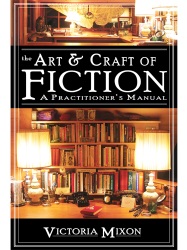The quality debate is of course the biggie. If the legacy publishers are already dumbing down expectations, and new writers are self-publishing too soon with inferior quality products, what chance of quality works being found? Or maybe, just maybe, I need to rethink what “quality” writing is. Is “quality” writing something that only appeals to a minority educated enough to appreciate subtle Latin phrases or passing quotations from Shakespeare’s lesser know works? Or is that just elitism? Can a “quality” piece of writing not also engage the masses simply by being a gripping, or at least, entertaining story written in simple, engaging English?
—Mark Williams
Vintage pulp: in its time considered garbage in/garbage out by the literati reading Virginia Woolf, T.S. Eliot, Hemingway, Faulkner, James Joyce, and the Post-Moderns like Paul Bowles, Flannery O’Connor, and Donald Barthelme who followed in their footsteps—it wasn’t genius-level gorgeous and even experimental. It was just good, gripping, well-written, exciting storytelling.
And, by today’s publishing standards, it was of a towering, monumentally-high quality.
The language is clean, clear, taut—there’s no flab, no lazy exposition, no cliches. There’s no pussyfooting around. The writing is meant solely and entirely for telling gripping stories.
The characters are three-dimensional human beings—not necessarily T.S. Eliot’s despairing barfly listening to the women cry, “Ta,” to each other, mooning over his beer wondering what’s up with Lil even as civilization settles slowly, miserably, gorgeously down on his head in perfect rhythm and reverberating, heartbreaking, word-by-word beauty—but Eliot’s fellows bellied up to that same bar, with their own griefs and lost dreams, their own blue-collar jobs (something Eliot didn’t have to worry about, with his career in banking), their own secret passions driving them to keep on living the day-to-day struggle of just living, in spite of the overwhelming darkness of life.
The stories are extremely solidly structured. (Much of vintage pulp presages the unexpected crack of the whip that represents the only acceptable Hooks of today.) The catastrophes are vivid and startling, the Climaxes inevitable and inescapable. By the time you reach the Climax of an Erle Stanley Gardner Perry Mason, you know exactly what those characters’ worst nightmare is, and you know Gardner’s going to deliver it to you on a silver platter.
Did regular blue-collar joe readers read this stuff? Were they attracted to its familiar but exciting content, entertained by its rollercoaster context? Did it sell?
Heck, yes, it did! That’s why publishers invented dimestore paperbacks, and why we have them (well, their more expensive equivalent) to this day. Those babies sold like hotcakes!
And there’s no law that says we can’t still write like that. All we have to do is study those books—they’re out there, you just have to look for them—and use the secrets and techniques they all knew to create our own hot-dog rollercoaster stories.
“The freshest and
most relevant advice
you’ll find.”
—Helen Gallagher,
Seattle P-I
The Art & Craft of Story


